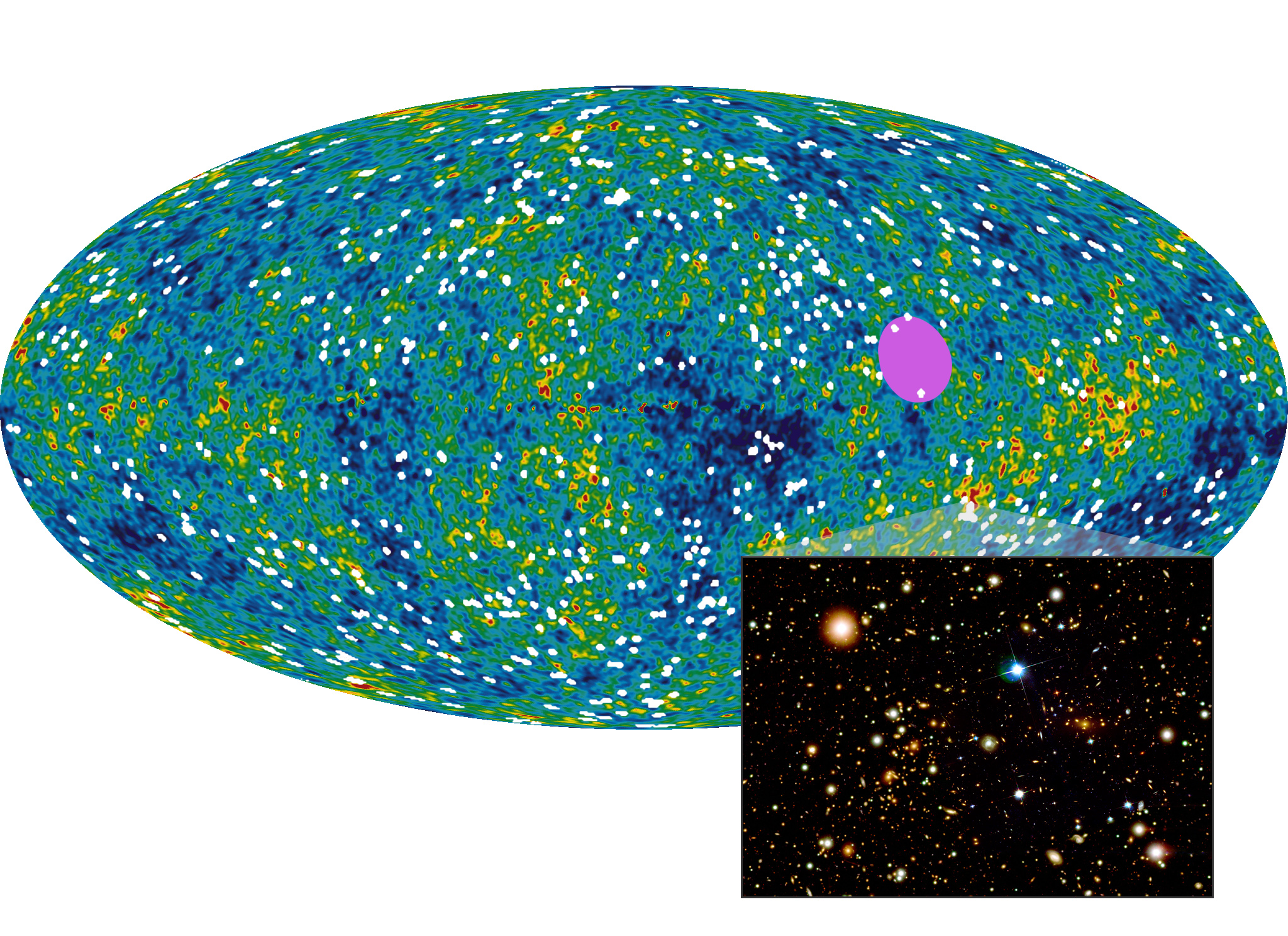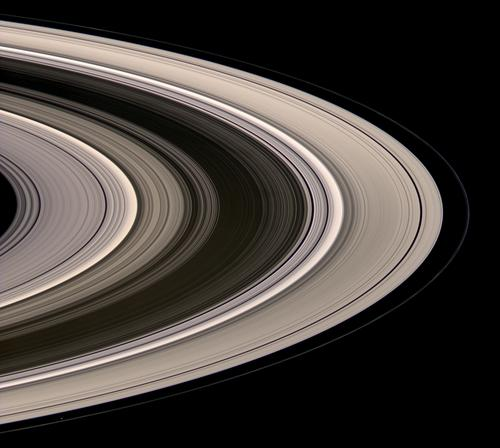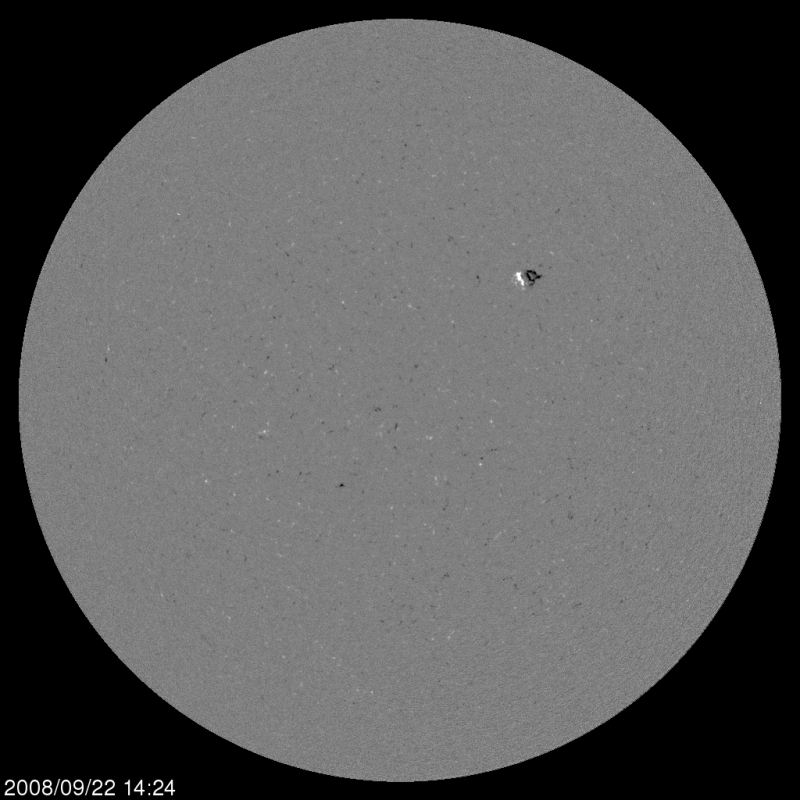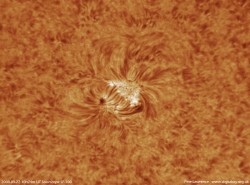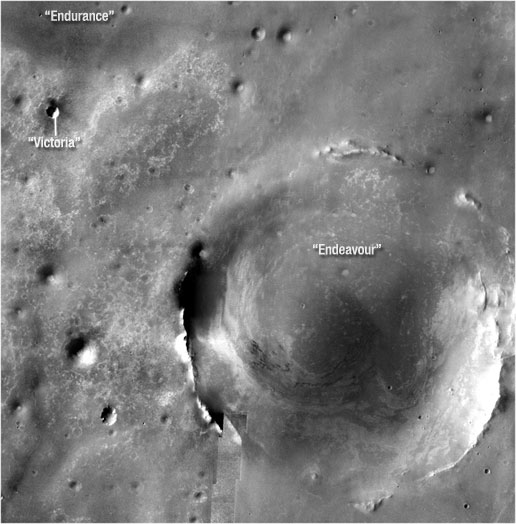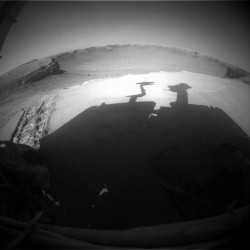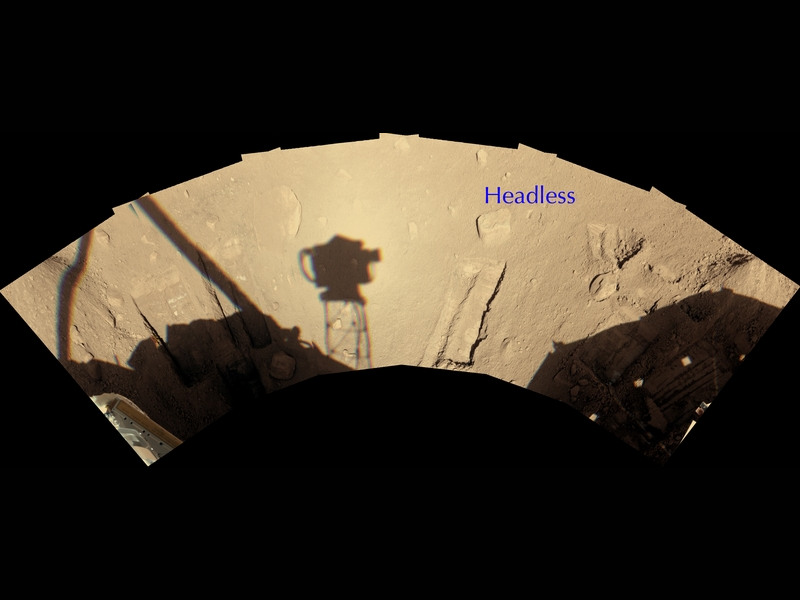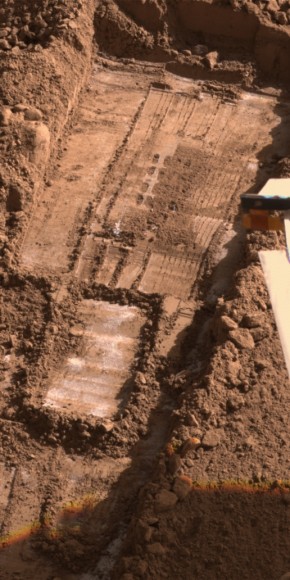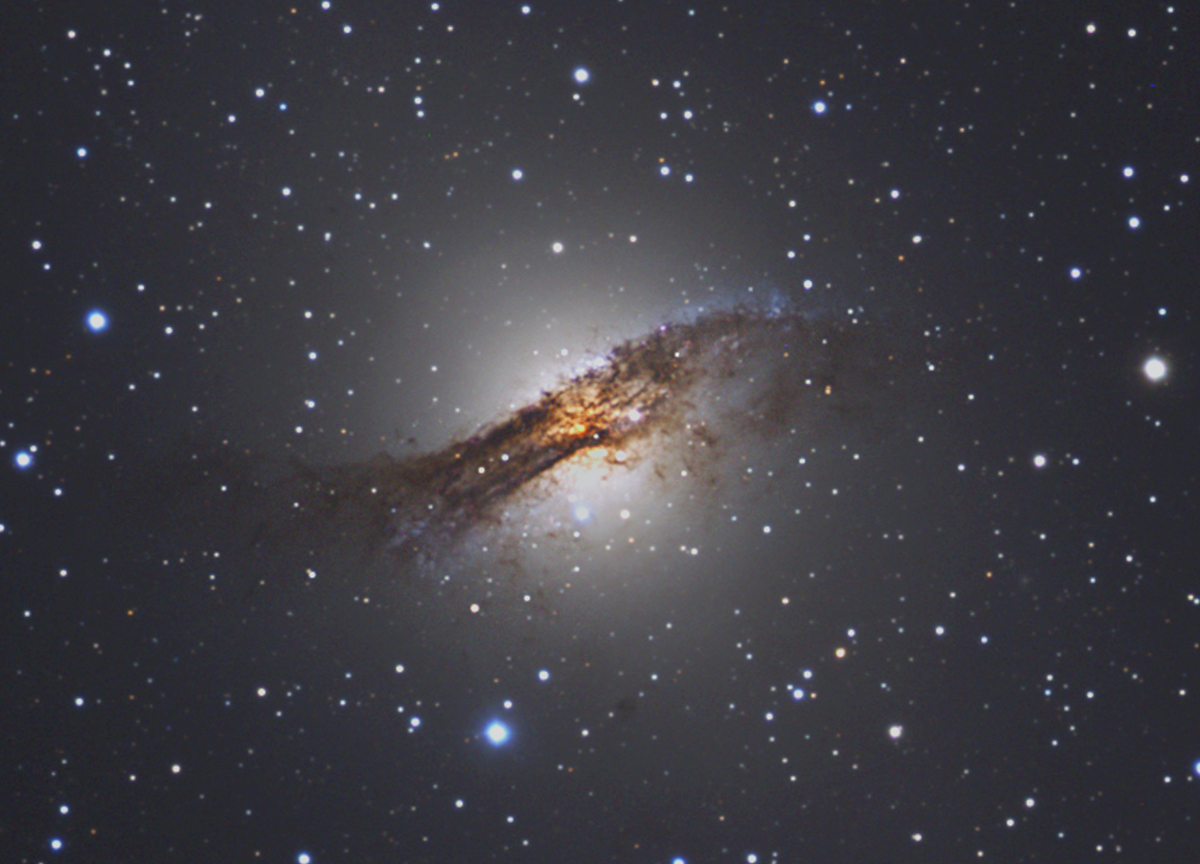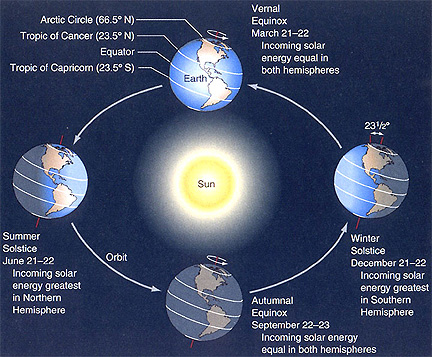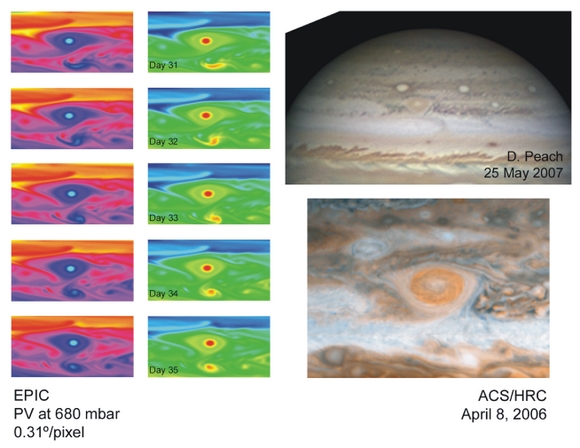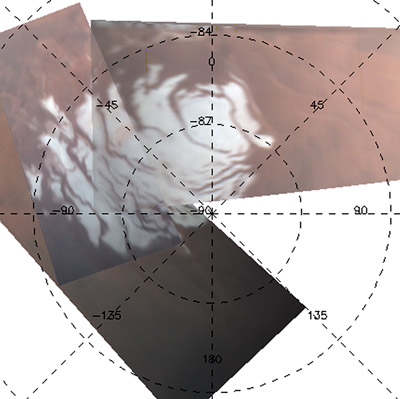[/caption]
Our first glimpse into the intricacies of Centaurus A was the big picture. We soon found out that not only was the first photograph a deep study, but the study of NGC 5128 was going to go deeper as well. One of the most obvious of all features is the central dust lane which positively crackles to the eye photographically. Let’s be mindful of the radiation and get just a little closer….
In every visual representation of Centaurus A, one of the most dramatic of all features is the central dustlane. To the human eye, the dust is an obstruction – blocking the starlight and what lay beyond. But, to the camera, shifting to redder wavelengths allows us a glimpse at what lay beyond. Through carefully controlled exposures and filtering, red emission from ionized gas at the H-alpha line appears, and blue regions of star formation along the dust lane spring to life – where blue giant stars are being formed. According to 2000 study done by Wild and Eckart; “The interstellar medium of Centaurus A (NGC 5128) has been studied extensively in recent years, using mostly molecular lines tracing low to medium density gas. The amount and distribution of the dense molecular gas was largely unknown. Here we present new millimeter data of the rotational transitions and obtained spectra of the emission which traces dense molecular gas at the center and along the prominent dust lane at offset positions. We find that Centaurus A and the Milky Way are comparable in their line luminosity. However, towards the nucleus the fraction of dense molecular gas measured via the line luminosity ratio, as well as the star formation efficiency, is comparable to ultra-luminous infrared galaxies (ULIRGs). Within the off-nuclear dust lane and for Centaurus A as a whole these quantities are between those of ULIRGs and normal and infrared luminous galaxies. This suggests that most of the FIR luminosity of Centaurus A originates in regions of very dense molecular gas and high star formation efficiency.”
A highly efficient star forming region… Yes, indeed. Those brilliant blue regions you see along the edges are brand new star clusters. Merger induced star formation…
Do you see now why the dustlane in Centaurus A appears to scream? Normally star formation occurs in the dense parts of molecular clouds… collapsing themselves into a ball of plasma to form a star. But, according the work of Martig and Bournaud; “Star formation in galaxies is for a part driven by galaxy mergers. At low redshift, star formation activity is low in high-density environments like groups and clusters, and the star formation activity of galaxies increases with their isolation. This star formation-density relation is observed to be reversed at z~1, which is not explained by theoretical models so far. We study the influence of the tidal field of a galaxy group or cluster on the star formation activity of merging galaxies, using N-body simulations including gas dynamics and star formation. We find that the merger-driven star formation is significantly more active in the vicinity of such cosmological structures compared to mergers in the field. The large-scale tidal field can thus enhance the activity of galaxies in dense cosmic structures, and should be particularly efficient at high redshift before quenching processes take effect in the densest regions.”
But… But, what happens if you have a galaxy that happens to be tidally triggered into star formation and then it just happens to merge with another galaxy at the same time? Aaaaah…. You’re beginning to see the light aren’t you? The galaxy that merged with NGC 5128 was triggered into a burst of star formation, then it combined with Centaurus A and a whole new thing happened. Let’s take a look at the work of Peng and Ford: “Stellar streams in galaxy halos are the natural consequence of a history of merging and accretion. We present evidence for a blue tidal stream of young stars in the nearest giant elliptical galaxy, NGC 5128 (Centaurus A). Using optical UBVR color maps, unsharp masking, and adaptive histogram equalization, we detect a blue arc in the northwest portion of the galaxy that traces a partial ellipse with an apocenter of 8 kpc. We also report the discovery of numerous young star clusters that are associated with the arc. The brightest of these clusters is spectroscopically confirmed, has an age of 350 Myr, and may be a protoglobular cluster. It is likely that this arc, which is distinct from the surrounding shell system and the young jet-related stars in the northeast, is a tidally disrupted stellar stream orbiting the galaxy. Both the age derived from the integrated optical colors of the stream and its dynamical disruption timescale have values of 200-400 Myr. We propose that this stream of young stars was formed when a dwarf irregular galaxy, or similar-sized gas fragment, underwent a tidally triggered burst of star formation as it fell into NGC 5128 and was disrupted 300 Myr ago. The stars and star clusters in this stream will eventually disperse and become part of the main body of NGC 5128, suggesting that the infall of gas-rich dwarfs plays a role in the building of stellar halos and globular cluster systems.”
Needless to say, the developments in Centaurus A are a little shocking, aren’t they? And shocked gas is what it’s all about. Says John Graham; “Observational evidence for shock-induced star formation is found in the northeast radio lobe of the nearby radio galaxy Centaurus A (NGC 5128). A gas cloud, recently detected in H i, is impacted by the adjacent radio jet to the extent that cloud collapse is triggered and loose chains of blue supergiant stars are formed. Diffuse clouds and filaments of ionized gas have been observed near the interface of the H i cloud and the radio jet. These show velocities that cover a range of more than 550 km s−1. Line intensities in their spectra are characteristic of a shock-related origin with strong [N ii] and [S ii] relative to Hα. The [O iii]/Hα line ratio indicates a large range in excitation that is not correlated with velocity. Distinct from this component is a group of four apparently normal H ii regions that are excited by embedded young stars and whose velocities are very close to that of the H i cloud. Star formation will continue for as long as the gas cloud remains close to the radio jet. The loose chains of blue stars in the area are resolved only because NGC 5128 is so close. The reported faint blue extensions and plumes in more distant analogs probably have similar origins.”
So now we have all kinds of things we’ve learned deep inside this giant. Is there anything else we should know before we leave this part and go on? Oh, you know it… A supermassive black hole 200 million times the mass of our own Sun.
Using the infrared vision of Hubble, astronomers can now see a hot gas disk is tilted in a different direction from the orientation of the jet – the indicator of the black hole. It’s believed this may be because the merger is so recent and the disk has not yet aligned to the spin, or the galaxies may still be playing tug of war. According to Ethan Schrier of STSCI, “This black hole is doing its own thing. Aside from receiving fresh fuel from a devoured galaxy, it may be oblivious to the rest of the galaxy and the collision. We have found a complicated situation of a disk within a disk within a disk, all pointing in different directions.” The most astounding part of all is the black hole itself may possible be a merger of two independent black holes! Is this why there is core-dominated radio-loud quasars here as well? As a radio galaxy it releases 1000 times the radio energy of the Milky Way in the form of large bi-directional radio lobes that extend some 800,000 light years into intergalactic space. Well, guess what… There’s theories on that, too.
According, to Saxton, Sutherland and Bicknell, that radio source may just be a plasma bubble: “We model the northern middle radio lobe of Centaurus A (NGC 5128) as a buoyant bubble of plasma deposited by an intermittently active jet. The extent of the rise of the bubble and its morphology imply that the ratio of its density to that of the surrounding ISM is less than 10^{-2}, consistent with our knowledge of extragalactic jets and minimal entrainment into the precursor radio lobe. Using the morphology of the lobe to date the beginning of its rise through the atmosphere of Centaurus A, we conclude that the bubble has been rising for approximately 140Myr. This time scale is consistent with that proposed by Quillen et al. (1993) for the settling of post-merger gas into the presently observed large scale disk in NGC 5128, suggesting a strong connection between the delayed re-establishment of radio emission and the merger of NGC 5128 with a small gas-rich galaxy. This suggests a connection, for radio galaxies in general, between mergers and the delayed onset of radio emission. In our model, the elongated X-ray emission region discovered by Feigelson et al. (1981), part of which coincides with the northern middle lobe, is thermal gas that originates from the ISM below the bubble and that has been uplifted and compressed. The “large-scale jet” appearing in the radio images of Morganti et al. (1999) may be the result of the same pressure gradients that cause the uplift of the thermal gas, acting on much lighter plasma, or may represent a jet that did not turn off completely when the northern middle lobe started to buoyantly rise. We propose that the adjacent emission line knots (the “outer filaments”) and star-forming regions result from the disturbance, in particular the thermal trunk, caused by the bubble moving through the extended atmosphere of NGC 5128.”
And now you know just a little bit more about what’s deep inside a giant…
Many thanks to AORAIA member, Mike “Strongman” Sidonio for the use of this incredible image.

